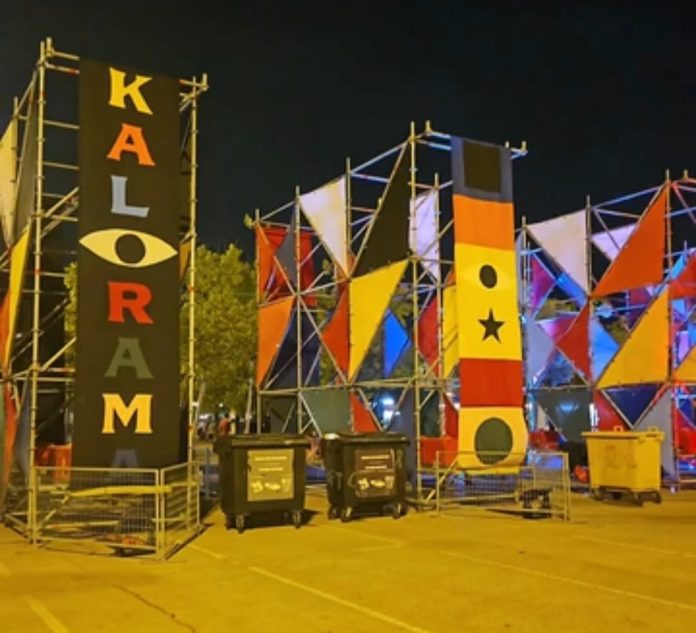The festival sector is well-versed in extolling the virtues of the wider economic impact of events, with many attracting visitors from far and wide, adding to a region’s tourism revenues. But what of those events that wish to cater only for local audiences, removing travel-related impacts and lessening the strain on local infrastructure? Spain, in particular, has seen protests against over-tourism, which led Duncan Wheeler to look at their festival sector from a local perspective.
In my professional capacity as a Professor of Hispanic studies, and as a dilettante music journalist, I have attended my fair share of press conferences and festivals in Spain. They often follow a standard format: a representative of the local government and promoter boast about attracting a stellar international lineup, breaking attendance records, alongside often dubious data around nebulous benefits for the local economy. When I attended the 2010 edition of Bilbao BBK – headlined by Rammstein, Pearl Jam and Faith No More – tickets for foreigners were priced lower than for locals. Since then, and with the rise of Airbnb, policy stakeholders and everyday citizens have become more sceptical of the presumed advantages of a tourist-dependent economy with sustainable strategies for the future include diversifying destinations and controlling visiting numbers. This general tendency has been reflected in discussions surrounding music festivals. In 2023, the investigative journalist Nando Cruz published a well-documented book (Macro-festivals: The Black Hole of Music) in Spanish, which denounced the unscrupulous practices of a cutthroat globalised market and suspect local practices for live music. Much of the security team for a performance in Murcia by Rauw Alejandro ran for cover in September 2023 as thousands of adolescents were left slipping and sliding in the mud as a thunderstorm battered a makeshift stadium with collapsed fences. Prioritising profit over health and safety, the promoters refused to cancel with the doors opening after a two-hour delay and the Puerto Rican reggaeton superstar appearing onstage after midnight. By that time, I had given up and gone to bed. This summer, I had better luck watching Green Day return to Madrid after a controversial performance (the California punk rockers had been heavily criticised in 2017 for performing shortly after the death of a circus acrobat) at the Mad Cool Festival. I was lucky to be in the front standing area, but general admission ticket holders could barely hear or see. Advertisements made it look as if the one-day festival was to take place in an underused tennis arena (built for Madrid’s unsuccessful Olympic bid) when it was, in reality, held in the vast carpark outside.
It would, however, be unfair to dismiss all Spanish music festivals as opportunistic money grabs. In 2024, both the inaugural Madrid edition of the Lisbon-based Kalorama Festival and the long-running (since 2005) Cruïlla Festival in Barcelona offered a more bespoke experience. Both responded, in different ways and with varying degrees of success, to new discourses surrounding tourism and the (mis-) use of public money. Since receiving a makeover for the 1992 Olympic Games, Barcelona has become one of the world’s major tourist destinations, with the annual Primavera Sound attracting tens of thousands of revellers from abroad. The Catalan capital has arguably become a victim of its own success, locals pushed out and rallies against mass tourism replacing pro-independence demonstrations as the principal focus of local protest since Covid-19. Hosted in the beach-side Forum Park, one of the prime locations for Primavera Sound, Cruïlla was promoted as a boutique festival for and by locals with daily attendance capped at 25,000. The profile of Madrid, historically a city unfairly snubbed by travellers, has been raised over recent years with campaigns to attract foreign tourists to its world-class cultural and gastronomy. With tourists feeling increasingly unwelcome in Barcelona, the Spanish capital has registered record numbers of visitors, but August remains a challenging month due to the unforgiving heat in the landlocked city. In an attempt to raise hotel occupancy in 2024, the Regional Government subsidised the Basque promoter behind Bilbao BBK for a Spanish offshoot of Kalorama.
Held over four days from Wednesday July 10 to Saturday July 13, discounted passes for Cruïlla were available to buy, but individual lineups had clearly been curated with disparate demographics in mind. The Wednesday bill, featuring predominantly Spanish-language urban acts from both sides of the Atlantic, attracted the youngest audience. The irony of Vueling being a principal sponsor aside, the Festival courted an overwhelmingly local audience. Rates at a hotel located within metres of the site entrance were no higher than usual, whilst even the final day featuring The Smashing Pumpkins, The Pet Shop Boys and Johnny Marr enticed few tourists. Calexico wishing the Spanish national team luck in their Euro-cup final against England received a muted response from the crowd not because there were Brits in attendance – it simply that many Catalans do not self-identify as Spanish. The Tyets – the first Catalan-language band to achieve a million downloads on Spotify in a month – were welcomed home as conquering heroes in an early-evening slot as exuberant as the Pet Shop Boys were subdued. The electronic duo has a loyal fanbase in Catalonia and a few thousand attendees bought a day ticket just to see them and willed them to be great even when Neil Tennant’s voice and energy faltered (Johnny Marr was a far more impressive ambassador for the 1980s UK music scene). It didn’t help that many middle-aged men had seemingly forced their kids to come along, visibly bored pre-teens and adolescents counting down the minutes to the end as the marathon greatest hits set continued into the early hours.
Whilst tickets for Cruïlla didn’t sell out, capacity averaged at over 70%. Keeping local authorities and audiences on side is more important than box-office receipts when it comes to future-proofing the Festival. The enviable mountain and sea view of the Park Forum belies the fact that it was developed alongside one of the historically most marginalised area of Barcelona, La Mina. Historically, Primavera Sound has been criticised for programming the occasional crossover flamenco act whilst ignoring more marginalised acts that play in La Mina’s gypsy cultural centre (located in a 1960s estate of tower blocks, also home to a bust to arguably the greatest flamenco singer of all time, Camarón de la Isla (1950-1992)). The organisers of Cruïlla have delivered on their promise to programme events throughout the city and over the year to promote and sustain a local ecosystem of artists and audiences. The aim is to nurture future talent such as Marala, a trio of three young woman who reinterpret traditional folk music in rumbunctious fashion in Catalan and Valencian. Their performance chops and grassroots following was showcased in an early-evening Cruïlla slot this summer.
The remit and KPIs of the three day-Kalorama Festival were not so clear. The lineup featured an embarrassment of riches with various acts who had played the previous week at the All Points East Festival in Victoria Park (LCD Soundsystem, JUNGLE, The Postal Service & Death Cab for Cutie) playing to much smaller crowds at a fraction of the price (an average of 15,000 spectators a day with single-day tickets costing little over £50). Some headline acts in London were even shunted down the bill to make room for Massive Attack, the Prodigy and Sam Smith. Late afternoon sets by Leeds rockers Yard Act and the Gossip received a raucous reception, more typical of intimate club shows than large festival gigs from the few thousand revellers willing to brave the unforgiving August sun. On one hand, piggy-backing of the back of the more established Kalorama Lisbon reduced overheads, whilst the backlash against the massification of festivals and unscrupulous behaviour of a number of Spanish promoters meant that Kalorama constituted a boutique alternative for the local thirty- and forty-something middle-aged audience that constituted its core demographic.
Conversely, this event was only made possible through generous local subsidies. This might be written off as a loss leader for future editions but, in 2024, the event was far from sold-out (even ignoring the generous quotient of guest-list and press tickets), and there was little evidence that Kalorama succeeded in its goal to boost tourism out of season. Announced relatively last-minute, hotel prices remained low in and around Madrid whilst few foreigners were present. There may have been a burger van called Williamsburg, but I didn’t hear any American accents and my only interaction with a fellow Brit was trying to resolve a misunderstanding about why the bar-staff wouldn’t sell a young woman a wine when there were cartons available (Spaniards will mix cheap wine with Coca-Cola for a kind of budget sangria much bellowed of teenagers called “calimocho” but they wouldn’t dream of drinking or serving it neat). In Barcelona, I was one of the few who had availed myself of the excellent and reasonably priced Cava on sale, but this is a Catalan as opposed to a Spanish delicacy. As Cruïlla and Kalorama prove, festivals can retain local flavour even in the age of globalisation.





